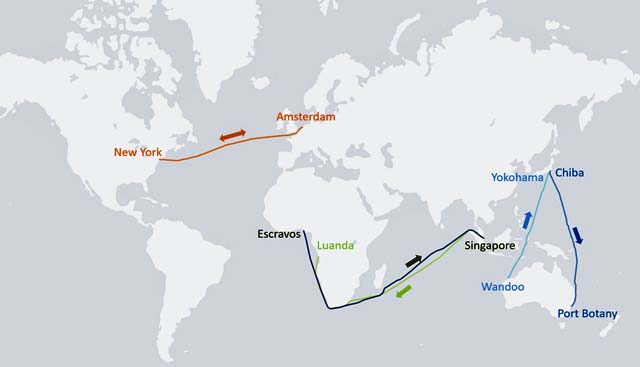A joint simulation project between Napa, Norsepower, and Sumitomo Heavy Industries Marine & Engineering (SHI-ME) has validated the emissions reduction potential of combining wind propulsion with voyage optimisation.
The results so far from the first phase of the project confirm that the technologies can deliver up to 28% emissions reductions on average. Phase two of the project aims to enhance performance modelling and strengthen the role of operational data in the ship design process to build smarter and greener vessels.
Napa believes that industry collaboration enables change to be navigated with confidence, gaining the insight and clarity needed to make smarter and more informed commercial, design and operational decisions at every step.
Such collaborative spirit was the foundation of Napa’s joint study with Norsepower and SHI-ME. From the outset, the aim was to bring diverse expertise together to answer a crucial question: what emissions reductions could be achieved by combining wind propulsion and voyage optimisation? Phase two turns attention to an equally important matter: how could these results become better still in the future?
Phase one ran from December 2022 to March 2023, to evaluate the fuel saving and emissions reduction potential of combining a Norsepower Rotor Sail with Napa voyage optimisation on a SHI-ME tanker. Using weather data from 2022 together with specifications provided by Norsepower and SHI-ME, the digital twins developed by Napa were able to simulate the performance of the tanker along six routes typically sailed by the vessel. The study found an average CO2 reduction of 19% when using Napa voyage optimisation alongside Norsepower Rotor Sails, with voyage optimisation contributing 10% of these emissions reductions.
The highest reduction was recorded for the Atlantic route between New York and Amsterdam, where the combination of four Norsepower Rotor Sails and voyage optimisation could deliver average emissions reductions of 28%. For the route between Singapore and Angola, the combination of wind power and weather routing reduced emissions by 18%, with voyage optimisation contributing 5%.
Phase two will use insights from the simulation, to explore how to predict vessel performance at the design stage, testing how the ship could handle varying sea and weather conditions. Phase one analysis showed that significant route changes are required to encounter the most favourable wind conditions, and this is where phase two of the project is taking the collaboration further. In the second phase, the project will explore how to enhance the performance of vessels designed with rotor sails even further by developing data for a wider range of vessel responses and weather conditions, for example by conducting a more advanced analysis of lateral forces and movement of the hull and developing new optimisation strategies using ‘dynamic’ conditions such as wind, waves and currents to evaluate the vessel’s expected performance in real-life conditions.



